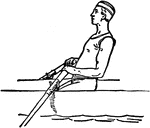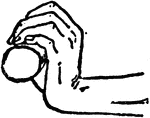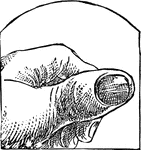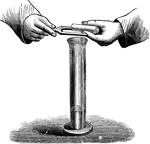
George III, King of England
"George III (1760-1815). The first two Hanoverian kings were ignorant of English politics and obliged…

Passion Flower
"Pasiflora is the passion-flower. Generally climbing herbs or shrubs. Fruit succulent, seeds many. Found…

Julian
"Thus the prince, both when present and when coming, was alike victorius: and these things he achieved…

Aries
"The battering-ram, was used to batter down the walls of besieged cities. It consisted of a large beam,…

Positions in Rowing
"Rowing is the propulsion of a boat by oars. The oarsman sits with his face to the stern of the boat,…

Positions in Rowing
"Rowing is the propulsion of a boat by oars. The oarsman sits with his face to the stern of the boat,…

Wrist Positions in Rowing
"Rowing is the propulsion of a boat by oars. The oarsman sits with his face to the stern of the boat,…

Wrist Positions in Rowing
"Rowing is the propulsion of a boat by oars. The oarsman sits with his face to the stern of the boat,…

Cestus
"The thongs or bands of leather, which were tied round the hands of boxers, in order to render their…

Cock-Fighting
"Two players are made to sit on the ground draw their legs up, and clasp their hands together over their…
Whizzer
"Get a circular piece of tin, three inches or more in diameter, and cut it round the edges in the form…

Halteres
"Halteres were certain masses of stone or metal, which were used in the gymnastic exercises of the Greeks…

Malleus
"A hammer, a mallet. In the hands of the farmer the mallet of wood served to break down the clods and…

Pedum
"A shepherd's crook. On account of its connection with pastoral life, the crook is often seen in works…

Retis
"In this woodcut, two men are carrying the net home after the chase, and hold in their hands two of…

Foreign Lands
Up into the cherry tree, who should climb but little me? I held the trunk with both my hands and looked…

Chimpanzee
A large West African Ape. A dark blackish brown hair, flesh-colored hands and feet, arms reaching to…

Boxer with cestus
"The cestus was used by boxers from the earliest times. It consisted of thongs of raw ox-hide, or of…
Parade Rest
"Carry the right foot 6 inches straight to the rear, left knee slightly bent; clasp the hands, without…
Order Arms Standing
"The butt rests evenly on the ground, barrel to the rear, toe of the butt on a line with toe of, and…
Port Arms
"With the right hand raise and throw the piece diagonally across the body, grasp it smartly with both…
Aim lying down
"In aiming, lying down, raise the piece with both hands; rest on both elbows and press the butt firmly…

High Parry
"Raise the rifle with both hands high enough to clear the line of vision, barrel downward, point of…

Bolt and magazine
"The bolt and magazine mechanism can be dismounted without removing the stock. The latter should never…

Dumb-bells
Two spheres of iron or other heavy material, connected by a short bar for a handle; used as a weight…

Path of a pendulum
"When the pendulum hands at rest in a vertical position, as Pa, it has no energy at all. Considered…

Edward Lear's Rhymes
There was an old man at a casement, who held up his hands in amazement; When they said, "Sir, you'll…

Ancient Egyptian Music
This image shows a group of ancient egyptian street musicians. (1) Woman with a tall light harp with…

Wheat Market
This illustration shows buyers wheat buyers waiting to get their hands on some product.

String Toy
A toy consisting of a hollow and well balanced piece of wood turned in the shape of an hour glass. It…

Pillory
A frame of wood erected on a post or pole, with movable boards resembling those in the stocks, and the…
Upper Extremity
The upper extremity of the human body. 1: Clavicle; 2: Scapula; 3: Humerus; 4: Ulna; 5: Radius; 6: Carpus;…

Caractacus And Claudius
Caractacus was a British Chief that had fought very bravely against the Romans. He was brought to Rome…

Murder of Prince Arthur
As a kind of joke, John, King Henry's youngest son, had been called Lackland, because he had nothing…























